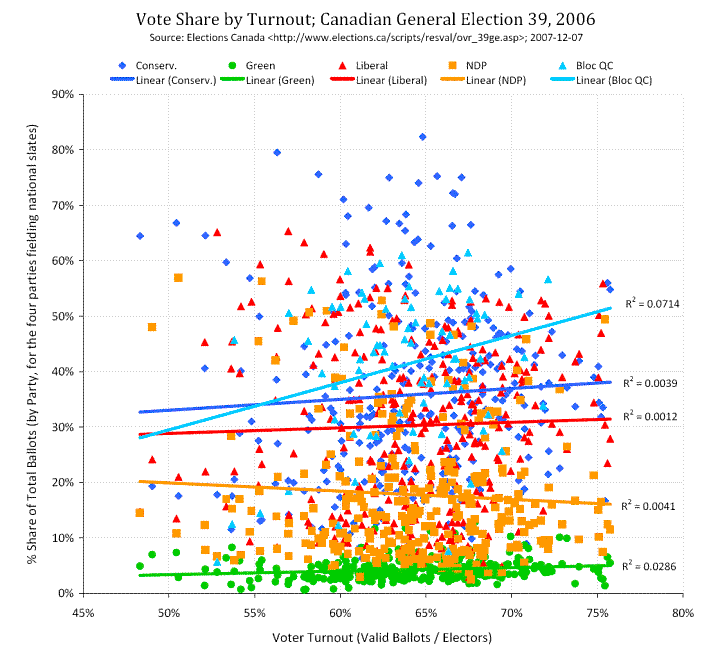"A graph in the best traditions of Edward Tufte shows how the voting was rigged in Russian parliament elections. Initially some regions were showing higher than 100% attendance, but later on everything was corrected, or way too much corrected, as the correlation between winning party's vote and attendance now stands at 90%. I guess the people who have rigged the vote have never heard about Correlation Cofficient."
A fraud detection problem has been solved. There's a strong indication that election laws were broken. The Systematic Innovation theory predicts that within an unconstrained system the next step would be activation of the "control" element, capable of addressing the abnormality. For example, in a country with independent press and/or judiciary an investigation and, possibly, a lawsuit would follow.
Now, I wonder what is going to happen with this discovery in Putin's Russia. In my opinion, there are several ways the situation can unfold:
1. Nothing happens. The government and the press ignores this information.
2. Strong negative reaction. The findings are suppressed and steps are taken to discredit the authors of the study.
3. A weak positive reaction. An independent investigation is initiated and it produces a credible explanation of the events.
4. A strong positive reaction. A government investigation is launched and it produces a credible explanation of the events.
4a. same as 4, but the government doesn't find anything suspicious.
Depending on the outcome, we'll be able to see which "control" mechanisms are the strongest, and which ones are entirely missing.
For comparison: Voting results in Canada.


No comments:
Post a Comment